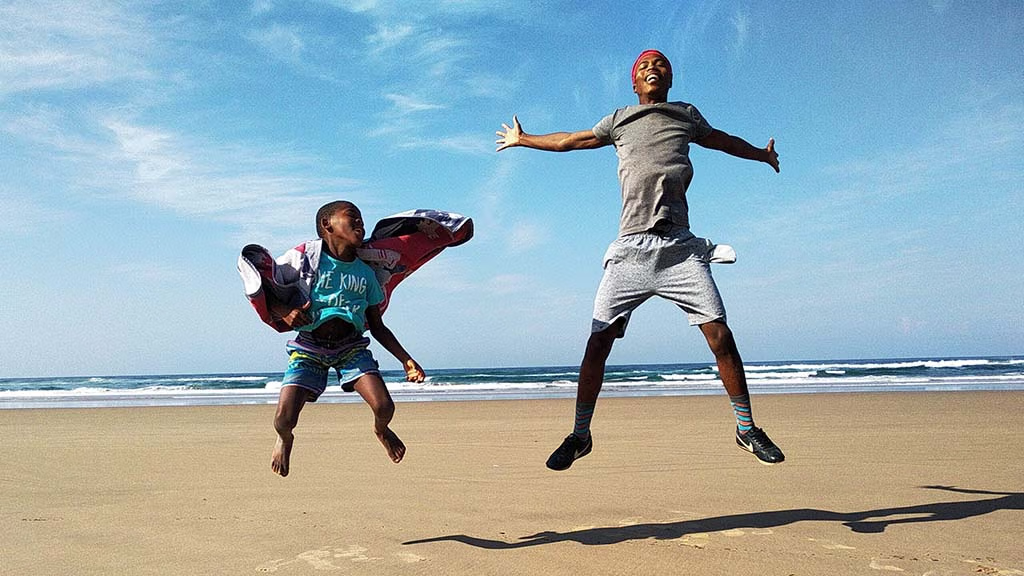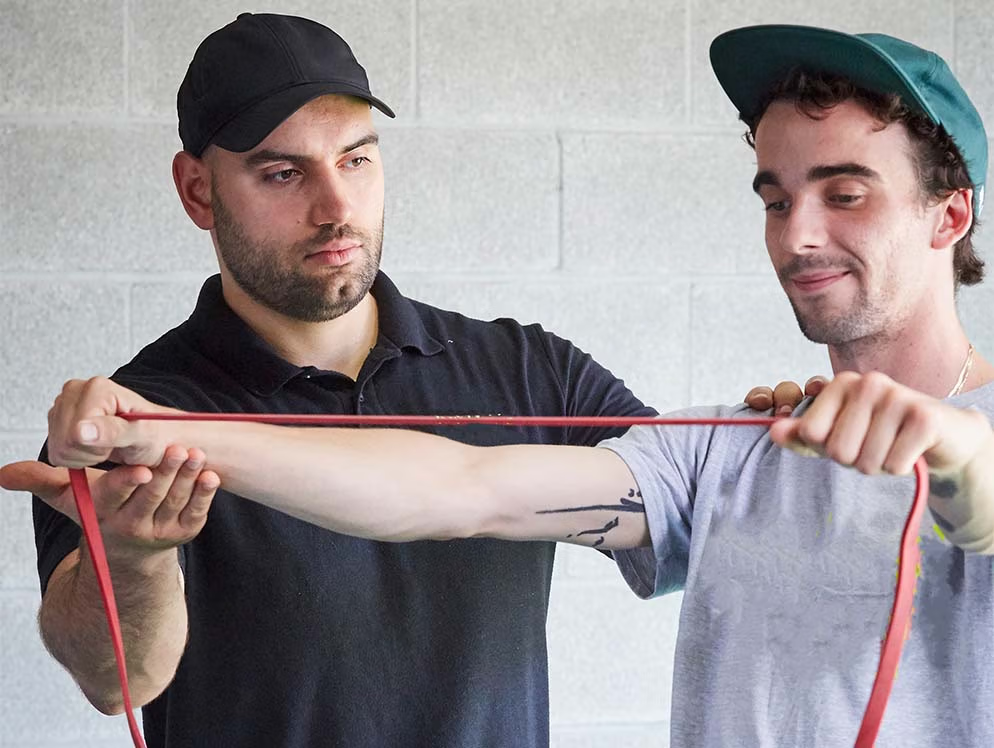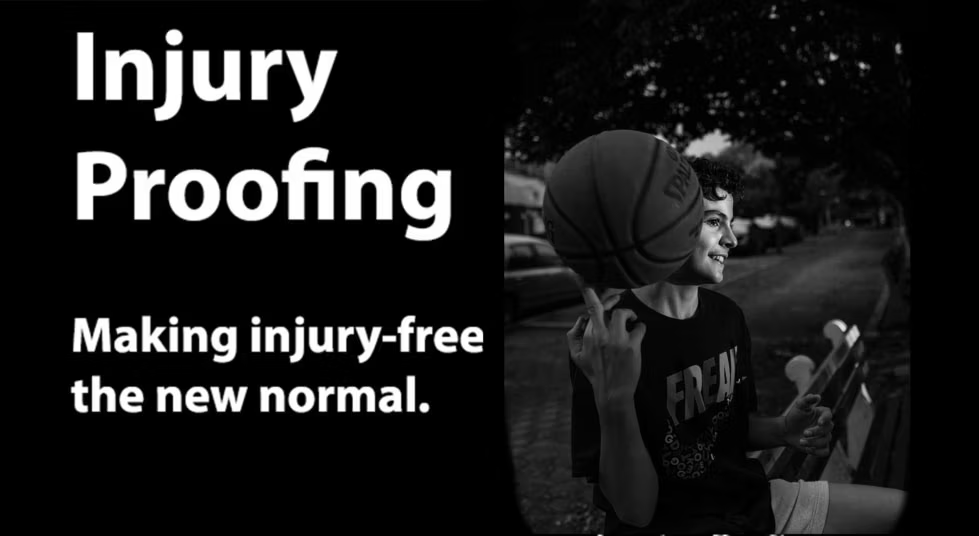Imagine doing what you want without worrying if your body will hurt or fall apart. Now stop imagining. Many of us believe that injuries are “part of life.” As if we can expect it no matter what we do. Not only is that wrong, but it’s also backwards thinking. As I discuss the benefits of physiotherapy, you’ll slowly begin to see why.
I grew up loving basketball, even became pretty good at it. As fate would have it for me I gradually developed a nagging left knee problem. It would recover with rest only to come back even worse the next time it got irritated. I got to the point of complete paranoia about my knee every time I jumped. Eventually, this led downward spiral of performance and playing time. We’ll call it the demise of my basketball career.
I’m like many people. Nothing would motivate me more than playing the game I love without the fear of losing it again. I hate saying this because I eventually became a physiotherapist… but I overlooked the importance of physiotherapy. Knowing what I know now along with my experience injury-proofing both athletes and workers, my perspective renewed. My hope is that I can change the minds of other people going through the same struggle I did: Doing something you love while living in fear of losing it.

Injury-Proofing - One of the Core Benefits of Physiotherapy
There’s a reason why a select few athletes like LeBron James and Tom Brady appear to be injury-proof. What’s their big secret? Unwavering adherence to the benefits of physiotherapy among other practices like nutrition, sleep, and stress management. One of the benefits of physiotherapy is what we call Prehab. Prehab is one part of our practice focused on stabilization, strengthening, and sport/work-specific training to prepare for the physical stresses one must face. Generally speaking, it should involve 3 elements: mobility, stabilization, and movement patterning.
Everyone’s workout regiment should include some form of prehab. Implement it in your warm-ups or dedicate it to days/times of the week, I don’t care – just do it. Prehab does a number of things to bullet-proof you from injuries. It strengthens the stabilizers of the body, loosens up all the necessary joints, eliminates poor movement patterns, and primes the individual for the activity. Depending on the type of activity you’re involved in, the program will look a bit different.
Case Study: Injury-Proofing the Basketball Player
Take basketball, my first love for example. You’re going to jump, pivot, and shuffle sideways more than other sports. Knowing these demands your body will face, prehab should be geared at making you an efficient/resilient jumper, pivoter, and lateral mover. The way we develop prehab programs is by breaking down these major demands mentioned above into their core components as follows:
Jumping
- Take off vs. landing mechanics
- Two foot vs. one foot jumping
- Linear jumping vs. lateral jumping
Lateral Movement
- Suspension in the athletic position
- Hip speed and strength to accelerate/decelerate movement
- Reaction time to quick changes in direction
Pivoting
- Balance/coordination on one foot
- Hip rotational ability (internal and external rotation)
- Explosive strength
Once we’ve analyzed the core components to the demands our basketball players must face, we program their prehab. We do this by taking each component (e.g. take-off mechanics) and addressing training them with each element of prehab: mobility, stability, and movement programming. Let’s talk about take-off mechanics for example…

Prehabbing the Take-Off Component of a Jump
So you want to make your jump take-off injury-free? Let’s use the 3 major elements of prehab to train this specific aspect of jumping.
Stability: Hip stability is often an issue with jumping. When taking off, take notice of the knees. Knees get awfully close to each other when jumping in many individuals. This faulty movement is loosely defined as “knock-knees” and clinically defined as “dynamic valgus”. Regardless of what you call it, it’s actually fine to have some of this movement. Too much of it though can put excessive stress on your knee. Who can forget the knee injury Derrick Rose suffered in the 2012 playoffs? The inside of the knee takes the biggest beating, with structures like your MCL and meniscus under brutal stress. Strengthening hip stabilizers like your gluteus medius/minimus and vastus medialis oblique can protect your knees from getting into too much dynamic valgus while jumping.
Mobility: Ankle mobility is the biggest problem with jumping. If your ankle cannot dorsiflex effectively (a movement characterized by the top of the foot moving towards the front of the shin), then your body will find movement elsewhere. Where will it go? You may have guessed it, the knees. Too much movement required from the knees is the reason why jumper’s often get knee pain. Free up your ankle mobility by stretching into dorsiflexion and releasing muscles that prevent it like your gastrocs and soleus. Then learn to utilize your ankles more effectively with movement programming, our final element.
Movement Patterning: As we discussed above, people often jump using their knees and neglect using their hips or ankles. It’s a reason why jumper’s knee is a common basketball injury. Movement patterning helps the individual get more movement from their hips and/or ankles when initiating a jump. It feels awkward at first. By restructuring the jumping pattern, the brain must struggle a bit to get used to it. With effortful practice, jumping with more hip and/or ankle engagement can improve jumping efficiency and decrease the risk of injury.

The Benefits of Physiotherapy
The benefits of physiotherapy go beyond treating neurological, muscular, and skeletal injuries and disorders. Our scope of care addresses the element of prehab which is designed to injury-proof an individual in anticipation of the physical stresses they must face. This can be from work, sports, or leisure (e.g. climbing a mountain). The importance of physiotherapy in preventative care can be largely seen in athletes with lengthy careers. Their investment in prehab is what enables or enabled them to achieve such a feat.

